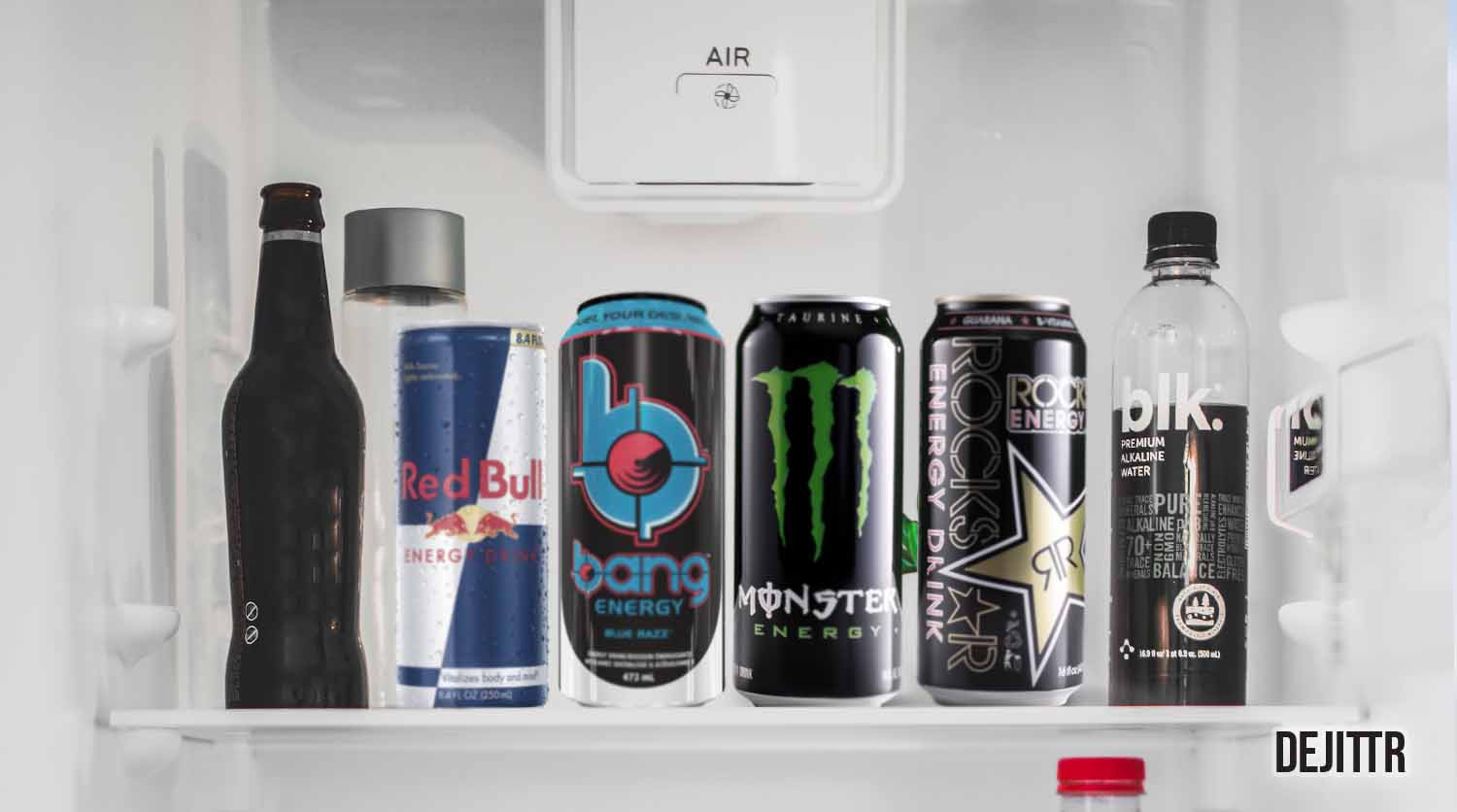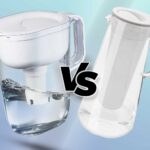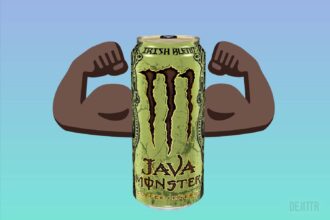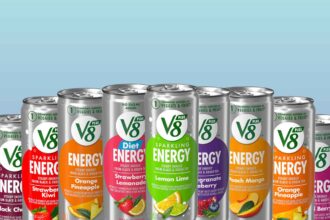The only option left when buying a case of energy drinks you can’t consume all at once is to store them. But is storing them in the fridge ideal for freshness and longevity?
Key Takeaways:
For the best taste and quality, storing energy drinks in the fridge is highly recommended. However, refrigeration is not necessary as long as the energy drink is unopened and hasn’t gone bad.
Read on to clear up confusion regarding energy drinks and refrigeration, plus all the related caveats.
Do Energy Drinks Need To Be Refrigerated After Opening?
| Energy Drink Can’s State | Refrigeration Needed | Reason |
| Open | Yes | Because otherwise, the bacteria and mold growth can begin after some time. |
| Unopened | No | Refrigeration is not compulsory for sealed cans, but storing it in a cool place like a refrigerator is advised. |
So let me explain:
As soon as you open an energy drink can, the parts inside are exposed to the environment.
Gradually, all the carbonation and fizz of the drink start to fade away. Finally, all you are left with is a flat energy drink.
And if you keep the energy drink for long hours, unattended and opened – be prepared to have a not so fresh energy drink.
Water, sweeteners, carbon dioxide, colors, acids, flavors, and preservatives are the basic ingredients of a carbonated drink. In addition, various vitamin supplements and fruit juices may be added to some beverages.
The pH of most energy drinks is between 1.5 and 3.3. Red Bull, for instance, has a pH of 3.3. On the other hand, the pH of Monster Energy is 2.7.
Bacteria, even harmful ones, don’t fare well in these drinks because of their acidity, but you can’t ignore their effects if the beverage is exposed for a long time.
Remember, microscopic organisms like bacteria and fungi are always present in the air surrounding us. They are just waiting for the moment to find a food source where they can grow and multiply.
And ideally, only the presence of water and nutrients in a food or beverage is enough for the bacteria to grow and multiply quickly.
The most significant spoiling organisms are yeasts because they can flourish in anaerobic and acidic environments. Zygosaccharomyces bailii can stand up to reasonably high carbonation and high quantities of preservatives.
Saccharomyces, Brettanomyces, Candida, Torulopsis, Kloeckera, etc., are just a few of the several yeasts identified from damaged foods.
Certain lactic acid bacteria can also flourish in these settings if adequate nutrients are present, such as in fruit juice-containing beverages.
Additionally, these microorganisms are resistant to benzoic and sorbic acids (Energy drinks use chemical preservatives, including benzoate/benzoic acid, to increase microbiological stability and avoid spoilage and flavor changes).
Haze, sludge, bad flavors, and gas are all byproducts of growth.
Yeasts that cause spoiling often release so much carbon dioxide that the bottle or container explodes.
Certain strains of Lactobacillus can cause Ropiness because of their ability to secrete dextrans. In addition, the slime balls have a wide spectrum of sizes, from very undetectable to as big as a pea.
Dissolved oxygen is required for the growth of acetic acid bacteria and mold in beverages. Mold colonies develop into soft, cottony, white blobs that float on the surface of the liquid. A shortage of oxygen impedes the formation of fruiting bodies.
The molds take their time spreading in bottled beverages, so they are typically only discovered after the drinks have already hit store shelves. Mold growth causes deterioration and may often be traced back to unclean conditions or faulty sanitation procedures.
Yeasts and lactic acid bacteria in carbonated soft drinks are typically not sourced from flavor concentrates, water, or other additives.
Fruit juice-based beverages tend to go bad more quickly than others. The main cause of spoiling is the accumulation of bacteria in the plant’s surroundings.
Proper hygiene is key to keeping drinks fresh for as long as possible. Furthermore, it is important to keep an eye out for yeasts and mold in liquid sweeteners.
Also, cans and bottles, for example, might harbor bacteria if they aren’t thoroughly washed before filling.
Long story short, energy drinks, like any other beverage, can spoil if left open – due to the growth of microorganisms.
How Long Do Energy Drinks Last After Opening?
As a general rule, energy drinks last only up to 1 day after opening because the opened can is at higher risk of getting spoiled early at room temperature. However, if you refrigerate the energy drink, you can still drink it for up to 2-4 days.
But usually, to be safe, it’s best to consume the energy drink within a few hours before the drink spoils.
While it is true that food’s oxidation and bacterial growth are slowed down by cold, this does not suggest that food stored in a refrigerator can remain indefinitely.
Usually, microbial proliferation is accelerated at room temperature. And although these processes slow down, they do not cease when food or beverage is properly kept in the refrigerator.
So that’s enough about opened energy drinks, but what about the unopened cans?
How Long Do Unopened Energy Drinks Last?
Although it’s best to consume an unopened can of energy drinks within nine months, they can typically last from 18-24 months.
Refrigeration is the ideal way to keep energy drinks fresh and in the best condition.
Does Shelf Life Vary Depending On The Brand?
The shelf life of energy drinks doesn’t vary much based on brands. For instance, the expiration date for monster and red bull energy drinks is around 18-24 months.
In terms of ingredients and flavors, these energy drinks do differ from each other. But in a broad sense, they consist of similar categories of ingredients like sugar, water, caffeine, sweeteners, etc.
How Long Does Drinks Like Red Bull & Monster Last In Fridge?
Keeping the energy drinks like Red Bull and Monster in the fridge does help to maintain them in their ideal condition.
So with refrigeration, you can expect them to stay in good condition as long as they are supposed to be. Remember, refrigeration does help in keeping the food or beverages fresh, but don’t keep them fresh forever.
If you kept the energy drinks in a hot place that gets sunlight, these energy drinks would have deteriorated earlier than their expected expiration date.
But refrigerating them keeps their quality and flavor in the best condition. Thus, you can still enjoy the energy drink within a few months.
How Do I Know When My Energy Drink Has Gone Bad?
Here are some of the signs to know your energy drink has gone bad:
- After opening an energy drink, there is an awful smell.
- The energy drink inside the can looks strange (not how it typically looks).
- After you take a little sip of the drink, the taste seems to be off.
Apart from the above signs, if you find the energy drink leaking, rusting, or the can is bulging, it’s best to toss it away and get a new one.
How To Properly Store Energy Drinks For Best Shelf Life
For the best shelf life, store the energy drinks in a cool place and away from direct sunlight. So it is good to keep the energy drinks in the refrigerator.
But let’s say there’s hardly any space left in your fridge to keep the energy drinks. So your next best option is to keep them in the kitchen pantry or cabinets.
The goal is to keep your unopened energy drinks intact – so that whatever sterilization process the manufacturers applied still keeps preventing the energy drink from becoming spoiled in the pressurized can.
As soon as the energy drink opened and is exposed to the environment, the spoiling process begins.
Cans and bottles can rupture in extremely hot conditions because the heat creates great pressure inside the container. So also consider this point while storing your energy drinks.
And check out this guide to learn more about the shelf-life of energy drinks.
Photo altered by dejittr.com | Photo attribution: lexandru Acea













